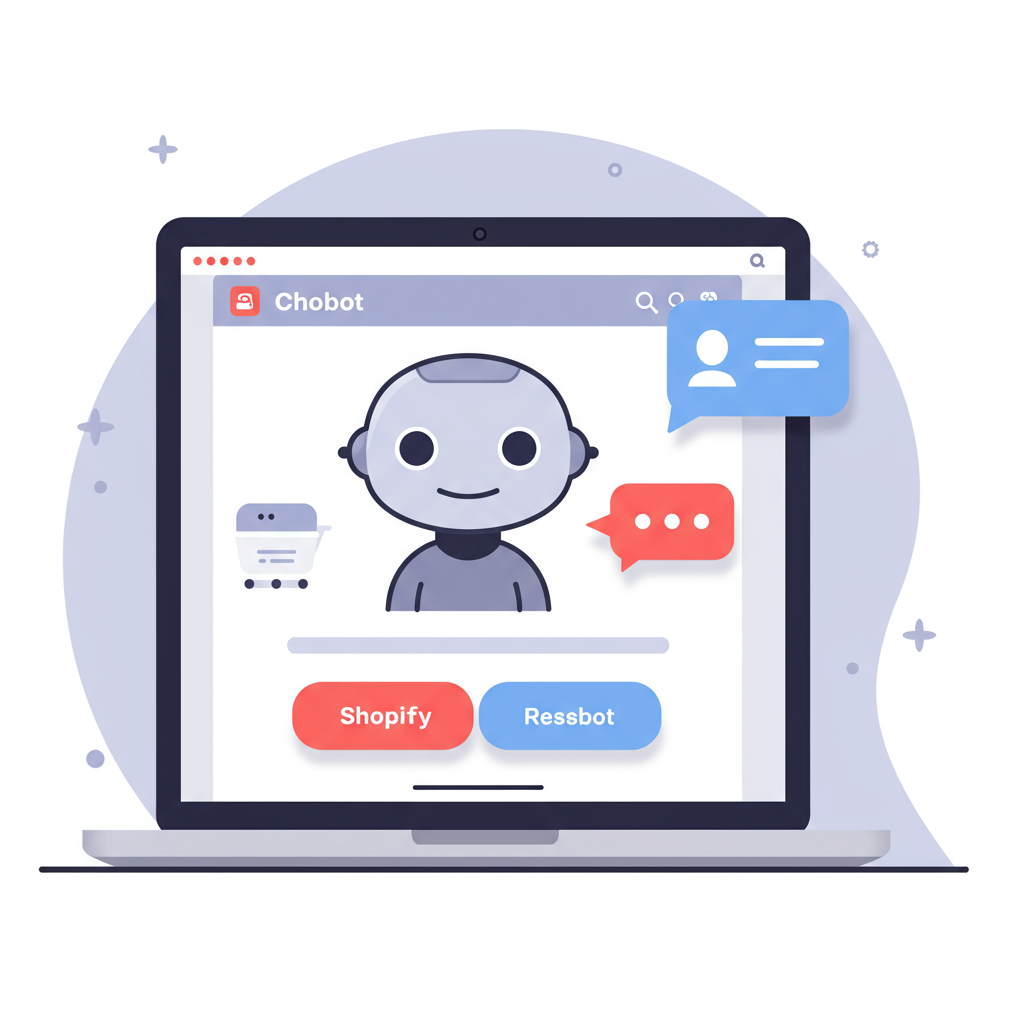Discover how integrating AI-powered chatbots can transform your Shopify store’s customer service, boost efficiency, and enhance customer satisfaction.
As a Shopify merchant, I know the daily grind. We’re constantly striving to grow our businesses, manage inventory, and fulfill orders. But there’s one area that often becomes a bottleneck: customer service.
Providing excellent customer support is crucial, yet it can be incredibly time-consuming and resource-intensive. Repetitive questions, 24/7 customer expectations, and the sheer volume of inquiries can quickly overwhelm even the most dedicated teams.
This is where automation steps in, specifically through the power of chatbots. I’ve seen firsthand how integrating a chatbot into a Shopify store can revolutionize the way we interact with our customers.
Simply put, a chatbot is an AI-powered or rule-based software application that simulates human conversation through text or voice interactions. For us, it’s a virtual assistant ready to help our customers around the clock.
They’re not just a trend; they’re a strategic tool. By automating routine inquiries, chatbots free up our valuable time and resources, allowing us to focus on more complex issues and business growth.
Imagine your store never closing, even for customer service. Chatbots provide instant support at any hour, regardless of time zones, ensuring your customers always feel heard and supported.
Customers today expect immediate gratification. A chatbot can answer common questions like “Where is my order?” or “What’s your return policy?” in seconds, drastically improving response times.
A significant portion of customer service inquiries are often repetitive FAQs. Chatbots excel at handling these, from product specifications to shipping costs, reducing the burden on your human agents.
As your Shopify store grows, so does your customer base and the volume of inquiries. Chatbots can effortlessly scale to handle thousands of conversations simultaneously without additional staffing costs.
By automating routine tasks, you can significantly reduce the need for a large customer service team, leading to substantial savings on salaries and operational overhead. It’s an investment that pays for itself.
Quick, accurate, and consistent responses lead to happier customers. When their questions are answered promptly, their overall experience with your brand improves, fostering loyalty.
Beyond support, chatbots can also act as sales assistants. They can guide potential customers through product recommendations, answer pre-purchase questions, and even qualify leads before handing them over to a sales team.
Modern chatbots can leverage customer data, like past purchases or browsing history, to offer personalized recommendations and support. This tailored experience makes customers feel valued and understood.
Every interaction a chatbot has can be logged and analyzed. This provides invaluable data on common customer pain points, popular products, and areas where your FAQs might need improvement.
Broadly, there are two main types of chatbots. Rule-based chatbots follow predefined scripts and decision trees, great for structured FAQs. AI-powered chatbots, on the other hand, use Natural Language Processing (NLP) to understand and respond to more complex, varied queries.
The good news is that integrating a chatbot with your Shopify store is often straightforward. Many popular customer service platforms and dedicated chatbot apps offer direct integrations through the Shopify App Store.
You might explore options like Gorgias, Tidio, or even dedicated chatbot builders like ManyChat or Chatfuel, which can be configured to work seamlessly with your Shopify data. Shopify Inbox also offers some automation features.
The first step to setting up your chatbot is to identify your most frequently asked questions. Look at your past support tickets, emails, and live chat transcripts to pinpoint common themes.
Once you have your FAQs, craft clear, concise, and helpful responses for each. Think about different ways a customer might phrase a question and ensure your bot can recognize variations.
Map out conversation flows. What happens if a customer asks something the bot doesn’t understand? How does it escalate to a human agent? A well-designed flow ensures a smooth customer journey.
If you’re using an AI-powered bot, it will require training. Feed it with examples of questions and their correct answers to improve its understanding and accuracy over time.
Always provide an option for customers to speak to a human agent if the chatbot can’t resolve their issue. This prevents frustration and ensures complex problems are handled appropriately.
Chatbots aren’t set-it-and-forget-it tools. Regularly review your chatbot’s performance, analyze conversation logs, and refine its responses and flows based on real-world interactions.
Let your customers know they are interacting with a bot. While you want it to be helpful and friendly, pretending it’s human can lead to distrust if the illusion breaks.
How do you know your chatbot is working? Track metrics like resolution rate (how many issues the bot resolves), customer satisfaction scores, and the reduction in human-handled tickets.
While powerful, chatbots aren’t without their challenges. Initial setup can be time-consuming, and maintaining accuracy requires ongoing effort. Over-reliance can also lead to a depersonalized experience if not balanced.
I believe the future holds even more sophisticated AI, allowing chatbots to proactively offer support, anticipate needs, and integrate even more deeply with our Shopify order and customer data.
Automating customer service with chatbots isn’t just about efficiency; it’s about enhancing the entire customer experience. It allows us, as merchants, to provide stellar support while focusing on what we do best: growing our businesses.
What are your thoughts on integrating chatbots into your Shopify store? Have you tried it, or are you considering it? I’d love to hear your perspective on this evolving aspect of e-commerce.
Embrace this technology, and you’ll find your customer service transforming from a cost center into a powerful driver of customer loyalty and sales.






